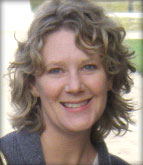Pam Fuhrmann

Pam Fuhrmann
Our relationship to the divine impacts our worldview and our orientation to self and leading others. Our notions of control and emergence; attitudes towards change; ways of relating, collaborating and creating shared meaning; and our perception of paradox are a few such examples the divine’s influence.
Through one’s orientation to the divine, one may find fundamental differences in how beliefs are understood to be true, such as historical and literally or mythic, figurative, and theoretical. One might ask, How might these ways of perceiving or knowing impact the way one filters, interprets, and evaluates information. Does one emphasize either the factual/scientific or irrational/intuitive? How might individual or organizational goals preference tangible, such as financial, versus non-tangible results?
Within various religious groups and individuals there exists varying emphasis on articles of belief or guiding symbols, which naturally evoke differing orientations towards self and others. For instance, a focus on Incarnation emits a world-affirming view, whereas a focus on the crucifixion accentuates human sin, suffering, and a pessimistic evaluation of the world (Wiles 567). Thereby should one ask oneself, as a leader, what symbol shapes their interaction with the divine? How does it impact one’s orientation towards self and others? Does it connect or distance one from those one leads? How does it influence one’s leadership style?
Another influencing factor is one’s perception of the divine as an interplay among many or solo-mastery. This distinction can be at the level of monotheism or polytheism, or one may have a pluralistic orientation even within a monotheistic religion. For instance, in Christianity multiplicity may be experienced through emphasis on the trinity or the holy family. How might these orientations impact one’s ways of relating and collaborating with others? One’s perception on the role of leaders and that of followers?
Referencing the overall state of uncertainty and increasing rates of change within the modern era, there are again two contradictory positions: one that rallies a greater faithfulness and adherence to past traditions and a second that acknowledges the need for further changes, albeit yet undefined, that will stand in relation to the changing world. How might the group norms, stakeholders, and speed to market differ for these two distinct communities? Are orientations toward innovation looking inward or outward; past to documented patterns or forward to the flux of the peripheries? How is this reflected in the culture and structure of the organization?
As shifting markets, emerging competitors, new technologies, and cross-sector partnerships, each of which involve movement into unfamiliar territory, emerge as the reality of the modern context; How might one’s orientation toward adaptive capacity or the ability to integrate new (unfamiliar) data and swiftly adapt to changing environments vary?
The ways of perceiving, relating, and evaluating, as represented above, each frame opposing orientations. Yet, the archetype of the divine reflects polarity: order, coherence, stability as well as chaos and dynamic change; also transcendence and immanence. How does one perceive this, and other, polarities? Is one’s orientation dualistic or inclusive? Does one place value on one pole over the other? Does one live with paradox and an imperfect reconciliation or does one limit one’s orientation to either/or rather than both/and? Do these tensions hinder, in which one becomes more intolerant of difference, or evolve one’s concept of opposites and their potentiality in one’s development and understanding of the world.
The modern era is inundated by uncertainty and exponential rates of change. Environmental, sociocultural, economical, and geopolitical relationships are becoming increasingly complex as money, goods, toxicity, and ideas flow across diverse boundaries at an ever-mounting rate. As globalization expands the world, it reveals the vital interdependency of things. The modern context, as seen by many, is in a state of crisis. Compounding the dilemma is that the majority of population is unable to manage the interrelated complexity and ambiguity it encounters and hence the responses to the problems of water shortage, climate change, financial meltdown, etc., are often addressed in singular form and remain inadequate.
Pointedly, how one perceives polarity in the divine directly influences one’s ability to manage complexity, ambiguity, and competing orientations. If one superimposes these ideas onto leadership, one may argue that leaders are needed who can manage the tension of these polarities and hold a multiplicity of views without becoming one-sided or exclusive in their orientation. Those who can understand and hold with mutuality both this and that and know when it is situationally appropriate to do so.
The divine and our relationship to it exists in our leadership attitudes and behaviors, corporate norms, and organizational structure. The question is does one acknowledge it. Correspondingly, is one conscious of when and where their perception of the divine both aligns and clashes with one’s way of leading?
